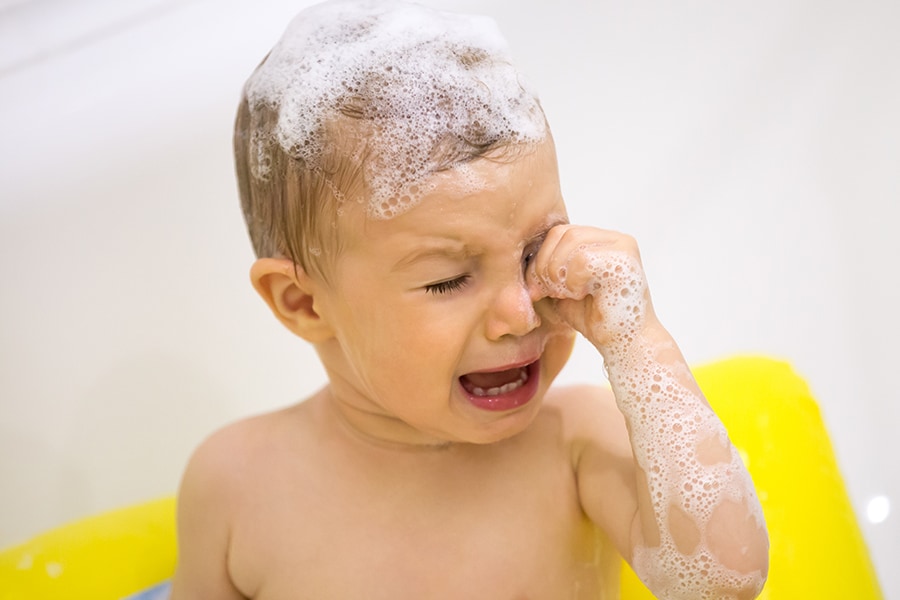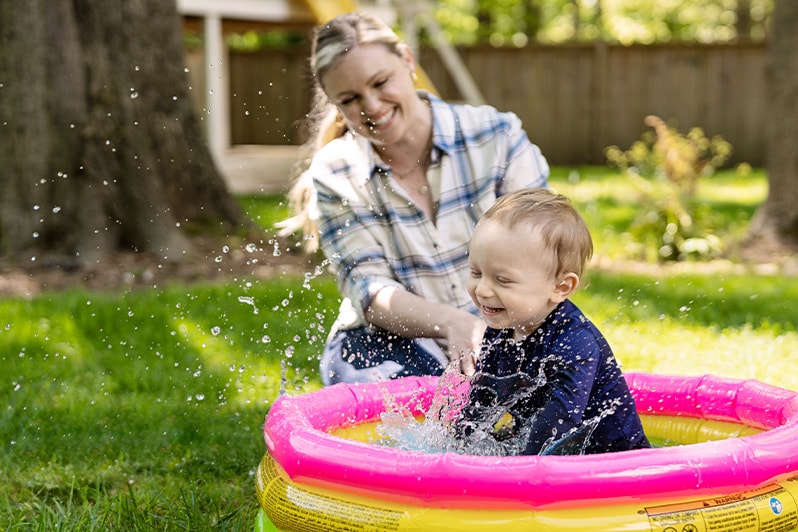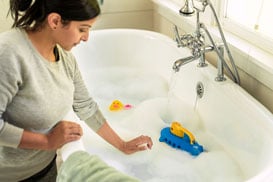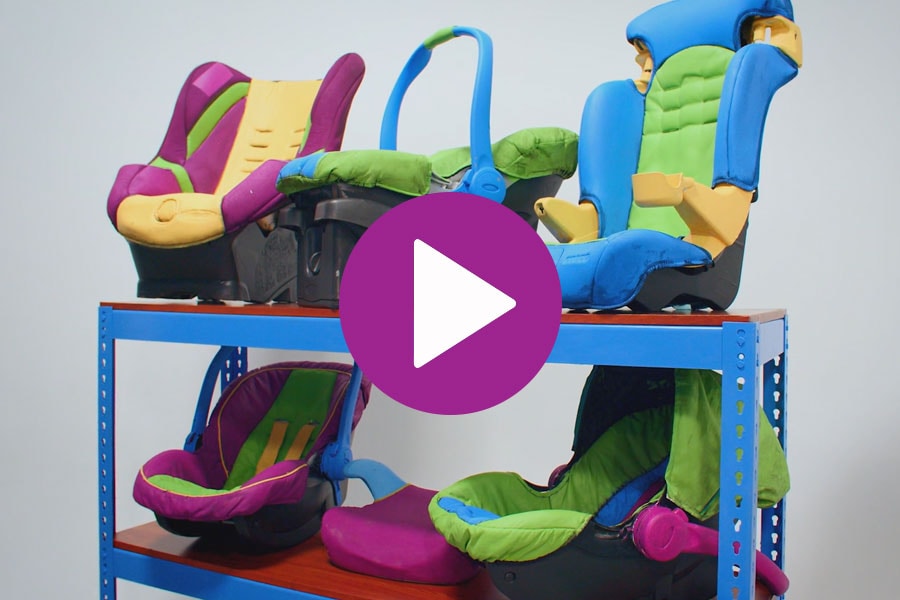Why Does My Toddler Suddenly Hate Baths?
Has bath time suddenly become a power struggle between you and your toddler? You may feel frustrated or even confused by this turn of events, especially if your child loved their bath as a baby. The most important thing to know is that this is normal behavior. We’re here with some tips to help you navigate the challenges that often come with bathing a toddler and ways to keep your child safe in the water.

What if my toddler suddenly hates baths?
If bath time battles have you feeling frustrated, know that you’re not alone. Many caregivers face this challenge during toddlerhood. Let’s start by exploring why your child may be pushing back against their bath.
Here are some reasons your toddler may suddenly hate baths:
- They’re flexing their independence. At this age, your child is learning to be more independent and to say the word “no.” They like to make choices for themselves and want to be in control. Being told they have to take a bath when they would rather play can feel like a challenge.
- Change can be scary. It’s normal to feel big emotions around big transitions. If your little one just graduated to the big tub, they may be feeling nervous about this new experience.
- There’s a lot going on. For some toddlers, the sights and sounds of bath time are exciting, or maybe even soothing. But for others, the feeling of the water, temperature of the air and sensations of having their hair washed or water poured over their heads can be uncomfortable or overstimulating, especially if they’re not used to them.
How can I make bath time less stressful?
Now that you understand why your toddler may be struggling with bath time, let’s explore some ways you can help make things a little easier on them.
Here are some simple things you can do to reduce bath time stress:
- Create a smooth transition. If your toddler is anxious about moving to the big kid tub, you can create a gentle transition for them. Try moving their baby bath into the tub for a bath that feels more familiar. Or, set them in the tub while it’s dry so they can play with their new bath toys. This will help them feel more comfortable in the new space. Just be sure to have a non-slip pad or towel in the bottom to prevent falls.
- Support their independence. Encourage your toddler’s newfound independence by allowing them to make their own decisions. Allow them to choose between a washcloth and a sponge, to pick out their favorite bath time toys, or select which bath book they want to read. This will build their confidence and make them feel like they’re in control.
- Ease into bath time. Announcing that bath time is coming soon will give your toddler time to emotionally prepare. Try saying, “Bath time is in 5 minutes!” so they can wind down their current activity and get on board with the new one.
- Ask questions. As your toddler grows, they’re better able to express themselves. If they seem anxious in the tub, ask them what they’re feeling. Is the water too cold? Is the sound of the tub draining scary? Listening to their verbal and nonverbal cues will help you adapt to their needs. For example, if they don’t like the feeling of water in their eyes, you can use a bath visor to keep their face dry
It's normal for a toddler to suddenly hate the bath. Still, it can be stressful trying to force them into the tub, and you’re allowed to feel frustrated. Keep in mind, your child isn’t trying to give you a hard time— they’re showing you they’re having a hard time. Asking questions and practicing patience will help you explore what’s really going on. So take a few deep breaths and use these tips to make bath time less stressful for both you and your little one.
Ready for more? Check out our tips on how to make toddler bath time fun.
Toddler bath safety tips
As you work toward making bath time a fun and enjoyable experience, remember to keep bath safety a top priority. Unfortunately, drowning is a leading cause of death in children ages 1 to 4, and it’s often quick and silent. The good news is many of these deaths are preventable by following proper safety guidelines.
Below, Children’s Healthcare of Atlanta Strong4Life experts share 3 ways to prevent drowning in the bath.
- Set up your bath in advance. The best way to keep your child safe in the bath is to practice close proximity. This means keeping your child within arm’s reach at all times. Gather all the supplies you’ll need before bath time starts, including shampoo, towels, toys and pajamas. This way there’s no reason to leave your child’s side while they’re in the bath.
- Run a shallow bath. We recommend using no more than about 2 inches of water. Even though that doesn’t sound like a lot of water, a toddler can drown in just 30 seconds, in as little as 1 inch of water.
- Remove all toys from the tub after each bath. By removing toys and storing them in a cabinet or bin, you ensure your child won’t be tempted to climb back into the tub to play with them.
For more safety information and tips, read our in-depth article on bathing your toddler.
If your child has an injury or is showing signs of illness, call your doctor or visit an urgent care center. If your child has a life-threatening injury or illness, is having trouble breathing or is unconscious, call 911 and/or visit an emergency department immediately.



